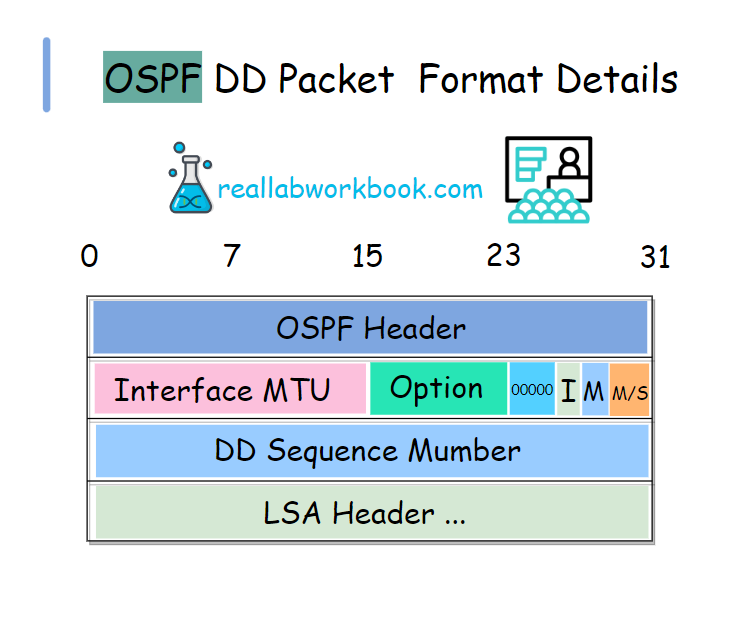OSPF Database Description Packet
Pass Any Cisco Exam On Your First Try.
Want to boot your networking career ? This is the chance for you.
To receive all the full articles and support Real Lab Workbook, consider subscribing:
1. What is OSPF Database Description Packet ?
OSPF Database Description (DD) packet is a type of message used in OSPF routing protocol. It is a critical component of the OSPF neighbor relationship establishment process and is responsible for exchanging information about the OSPF link-state database between neighboring routers.
When OSPF routers establish a neighbor relationship, they exchange DD packets to synchronize their link-state databases. The DD packet contains a summary of the router's link-state database, including information about the OSPF LSAs (Link-State Advertisements) it has in its database.
The DD packet includes details such as the router's OSPF router ID, the sequence number of the last LSA received, and a list of LSAs that the router has in its database. By comparing the sequence numbers and the list of LSAs, routers can determine if their databases are in sync or if any updates are required.
During the OSPF neighbor establishment process, routers exchange DD packets in a series of steps known as the "Database Exchange Process." This process involves routers taking turns sending DD packets and acknowledging them. The goal is to ensure that both routers have an identical view of the OSPF link-state database.
If a router finds that its link-state database is outdated or lacks certain LSAs, it can request the missing LSAs from its neighbor using subsequent OSPF packet types, such as the Link-State Request (LSR) packet.
In summary, OSPF Database Description packets are used to exchange information about the OSPF link-state database between neighboring routers. They play a crucial role in synchronizing the databases and ensuring that routers have an accurate view of the network's topology.
2. OSPF Database Description Packet Format Details
1. Interface MTU: 16 bits, Maximum size of an IP packet that an interface can send without fragmenting the packet.
2. Options: 8 bits, Optional OSPF capabilities:
E: AS-external-LSAs can be flooded.
N/P: Type 7 LSAs can be processed.
DC: Demand circuits can be processed.
3. I: 1 bits, If the DD packet is the first among multiple consecutive DD packets sent by a device, this field is set to 1. Otherwise, this field is set to 0.
4. M (More): 1 bits, If the DD packet is the last among multiple consecutive DD packets sent by a device, this field is set to 0. Otherwise, this field is set to 1.
5. M/S (Master/Slave): 1 bits, When two OSPF devices exchange DD packets, they negotiate a master/slave relationship. The device with a larger router ID becomes the master. If this field is set to 1, the DD packet is sent by the master.
6. DD sequence number: 32 bits, Sequence number of the DD packet. The master and slave use sequence numbers to check the reliability and integrity of DD packets.
7. LSA Headers: 5 byte, LSA header information included in the DD packet.



